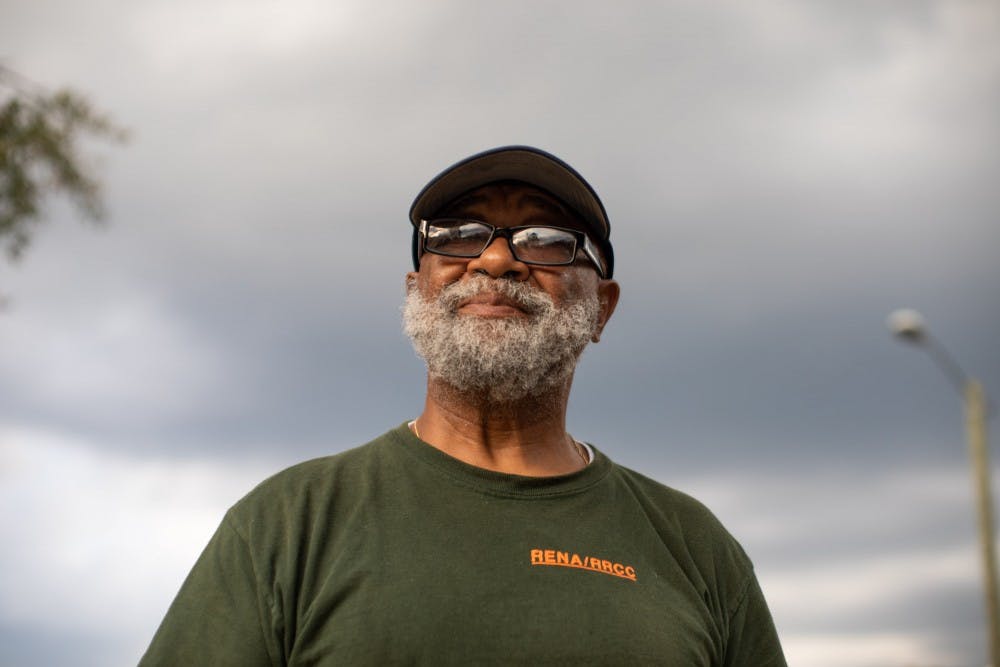Still, officials fought claims of racism and environmental injustice for decades. According to the Environmental Protection Agency, environmental justice is equal protection from environmental hazards and equal access to environmental decision-making, and it’s a standard the government legally must uphold. The term was coined after a similar landfill debate in Warren County.
For years, the town insisted these standards were met.
"I can certainly attest that when locating the area, it was not racially motivated,” Lee, then a state senator, told The Daily Tar Heel in 2001. “I tried to reassure the neighbors that it was being located there because the land itself was conducive to what we were looking for.”
Renewed community activism
With the dump in place, the Rogers Road community’s focus on community organizing exploded.
Campbell said he conducted surveys with other community leaders to develop priorities for improvements. Topping the list: gaining water and sewage access, closing the landfill and getting rid of the buzzards that infested the neighborhood due to its proximity to the dump.
Years later, reports would show the shallow wells many residents relied on for drinking water were contaminated by runoff from the unlined landfill — Campbell believes it may have even been fatal for some.
However, at the time, one of the most immediate and noticeable harms was the odor wafting toward the neighborhood on hot summer days.
“You couldn’t sit out on your porch or play in your yard and not smell that putrid smell coming from the landfill or see buzzards flying over your property,” said state senator Valerie Foushee, D-Orange, Chatham, who was formerly an Orange County commissioner. “It was awful. I wouldn’t want to live like this — nobody should.”
The current community center wouldn’t be around for another 40 years, so Campbell said residents met in other places, first in backyards and living rooms, then at the Faith Tabernacle Church after its construction in 1981.
Rogers Road had a political need, but it had social needs, too. Campbell said one of the first needs the community recognized was for fresh, healthy food, so they constructed a community garden. Young people didn’t have a place to go during the summer, so they started a summer program that spilled over into an after-school program.
“To be a part of the Rogers Eubanks neighborhood environment is that you can do what you do, and at the same time, you can see the results of the work that you do,” Campbell said. “It doesn’t cause you to get big-headed — it only inspires you to do more.”
To get the day's news and headlines in your inbox each morning, sign up for our email newsletters.
Barriers to change
Residents believed political change was bogged down by criss-crossing responsibilities that allowed local governments to dodge accountability for the neighborhood. Part of the neighborhood was under Chapel Hill jurisdiction, but part of it was in the county. In 2005, the Carrboro Board of Aldermen voted to annex a portion of the community into Carrboro.
As a result, Campbell said, no municipality would claim Rogers Road.
“We tell people that we are the hole in the doughnut,” Campbell said. “Everything around us affects us, and everything around us excluded us. Now we're saying ok, let's talk about connection.”
Overlapping, mismatched zoning patterns are not exclusive to the Rogers-Eubanks community. Instead, said Orange County commissioner Mark Dorosin, zoning has been wielded across the state to disenfranchise non-white, low-wealth communities.
“That's not by accident — that's part of the institutionalized discrimination that underlies all environmental justice issues,” Dorosin said. “These are communities that have been explicitly left out or excluded on the fringe, marginalized politically.”
Regardless, the community persisted. Leaders attended a North Carolina Environmental Justice Network summit in 2009, then went to the White House for an EPA conference. RENA was founded in 2007, opening a small community center in 2010, then the current center in 2014.
In 2011, RENA organized a cleanup of illegal dumping sites around the landfill and has partnered with UNC to bring students from the neighborhood to campus.
Chapel Hill Mayor Pam Hemminger said in an email the Town has made good on its promises and continues to try to support the community.
"It has been a determination of the Town to work with the RENA Community to make amends for hosting our collective landfill for so many years," she said.
Campbell said the next step is connecting the whole neighborhood to the sewer system.
“Those residents believed in themselves and believed in the system enough to keep knocking it,” Foushee said. “I've lived here all my life, and that's how Black folk have gotten anything that they've gotten. You just don’t give up.”
@alicebbennett
city@dailytarheel.com



